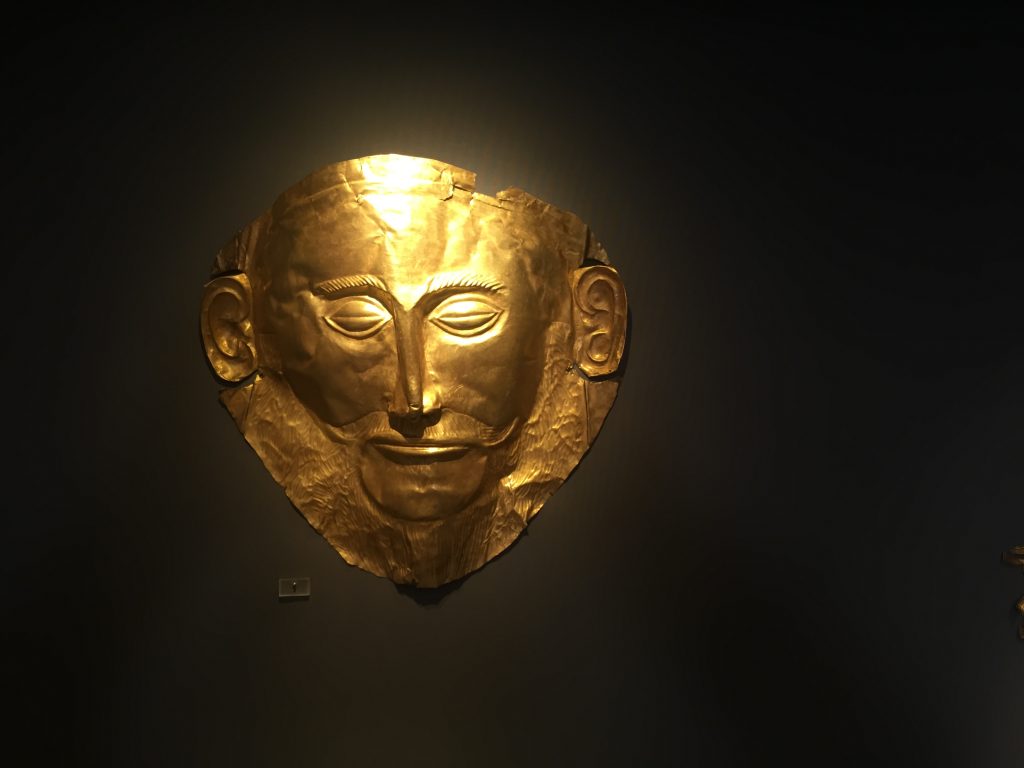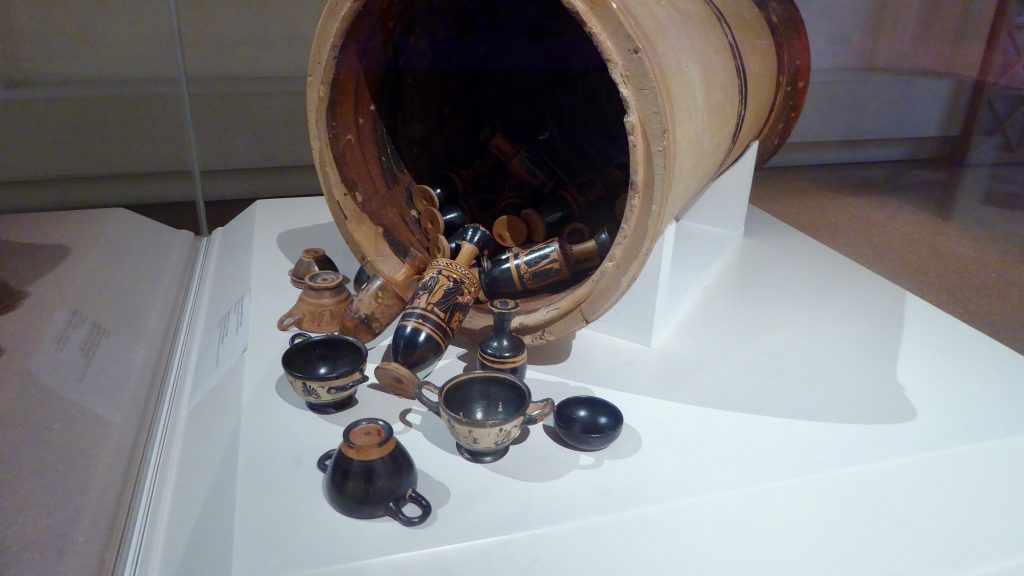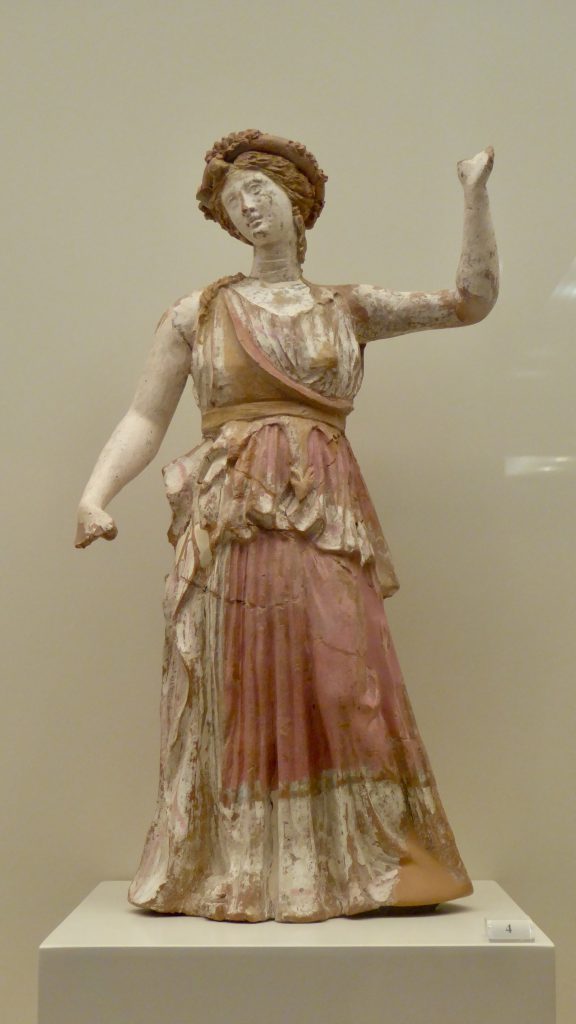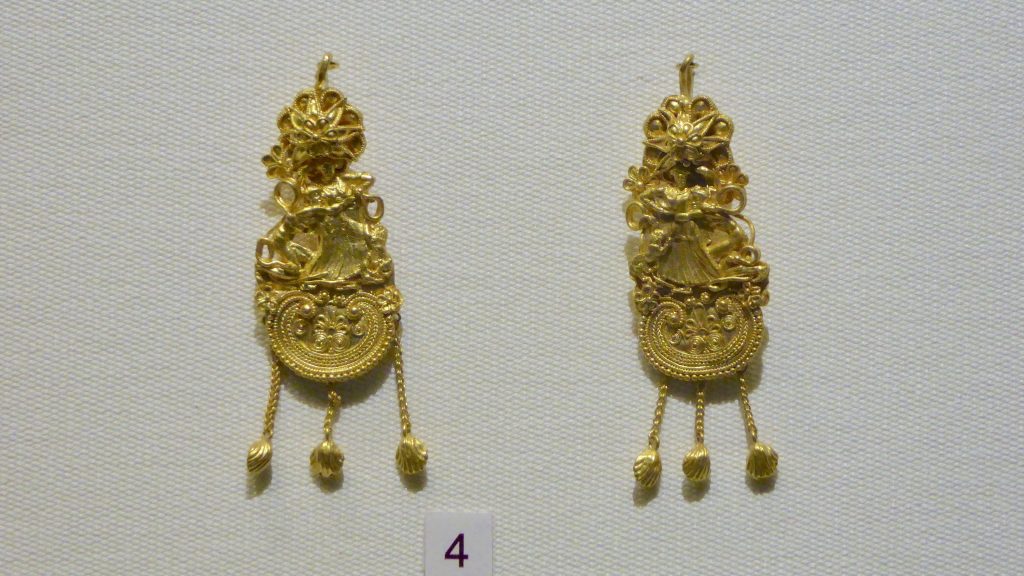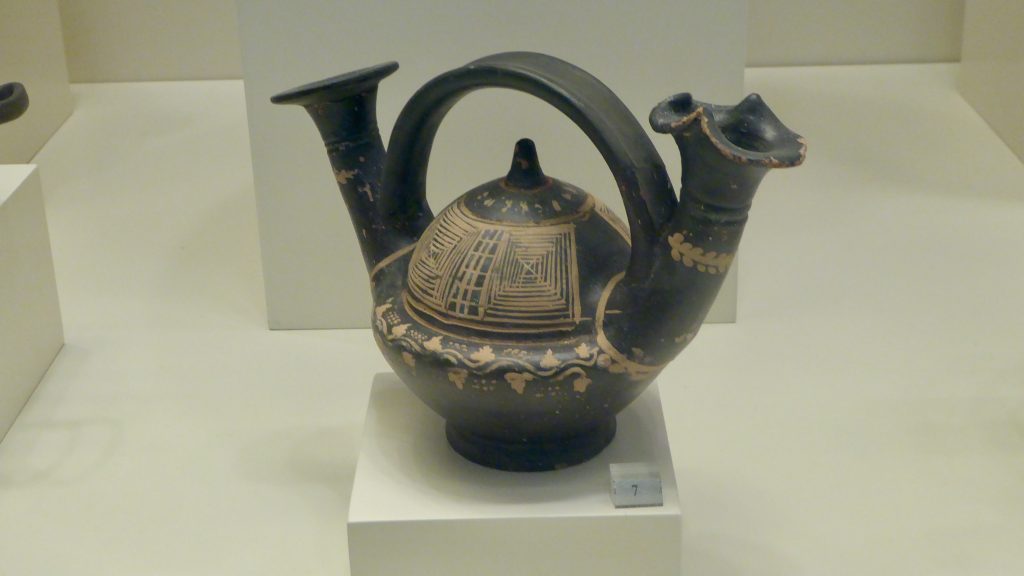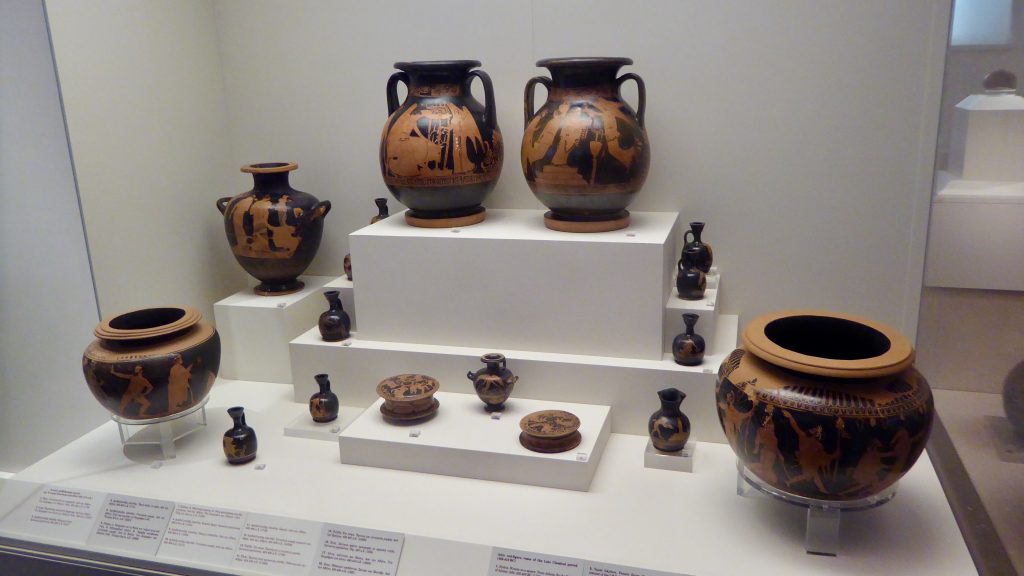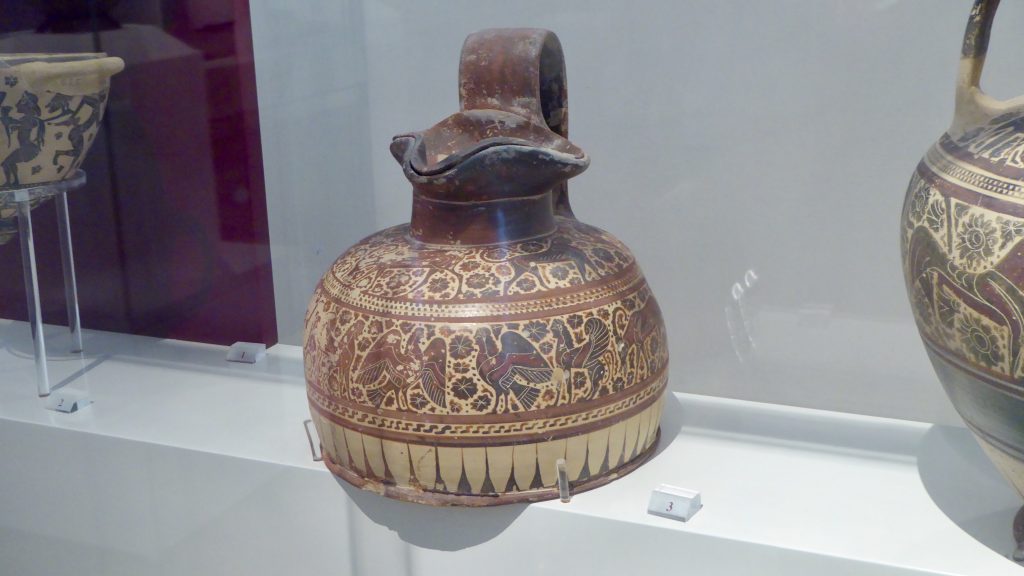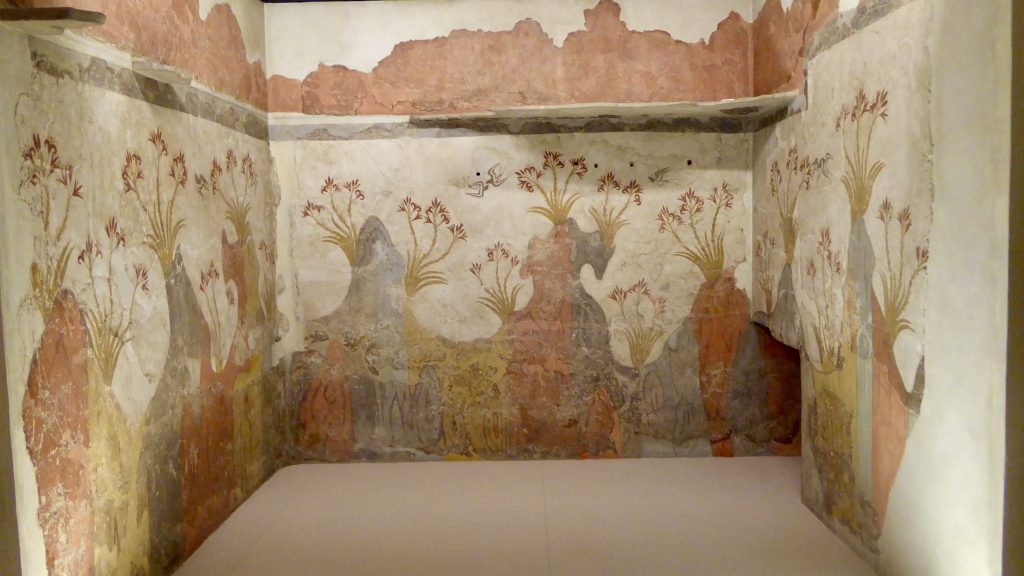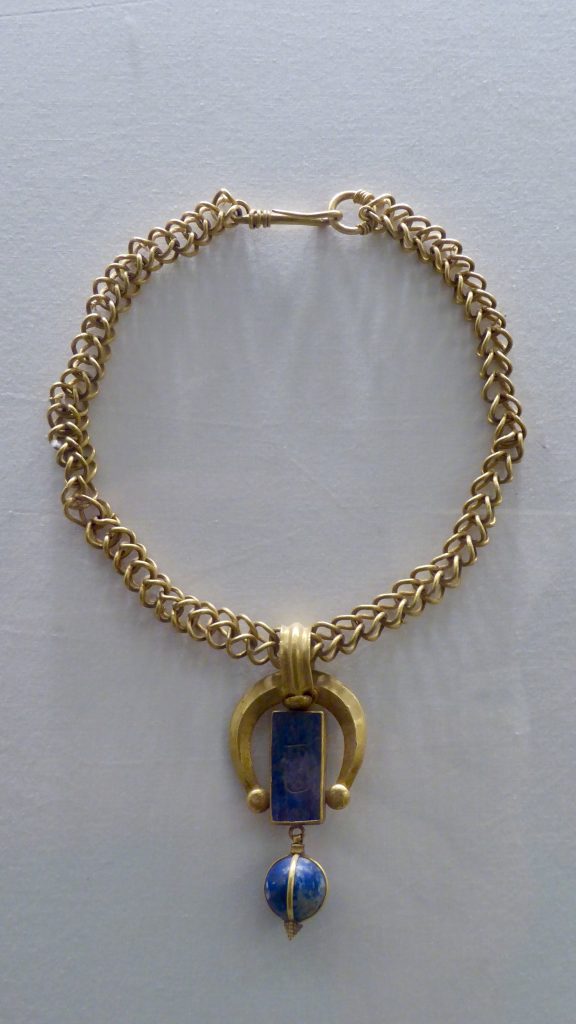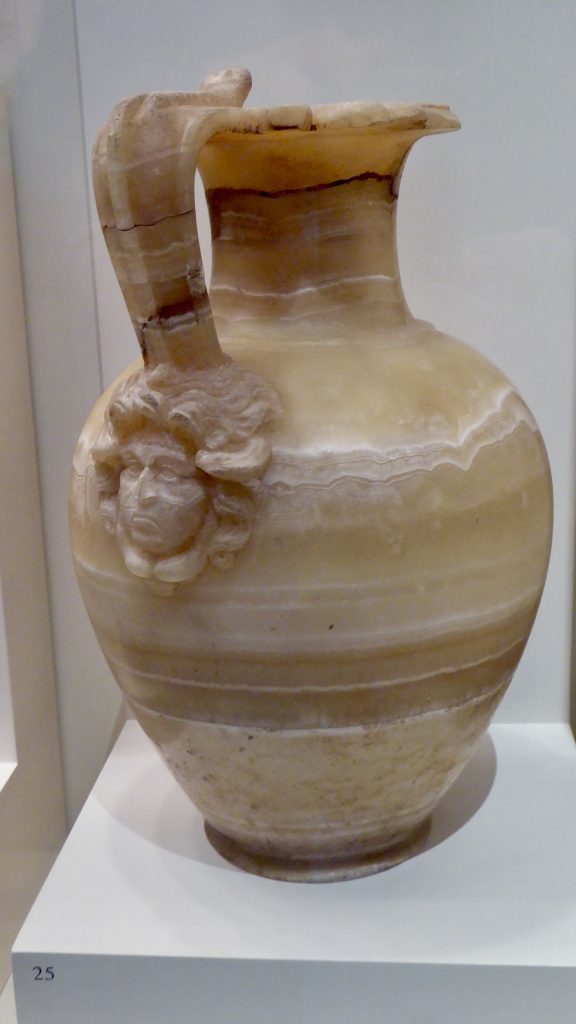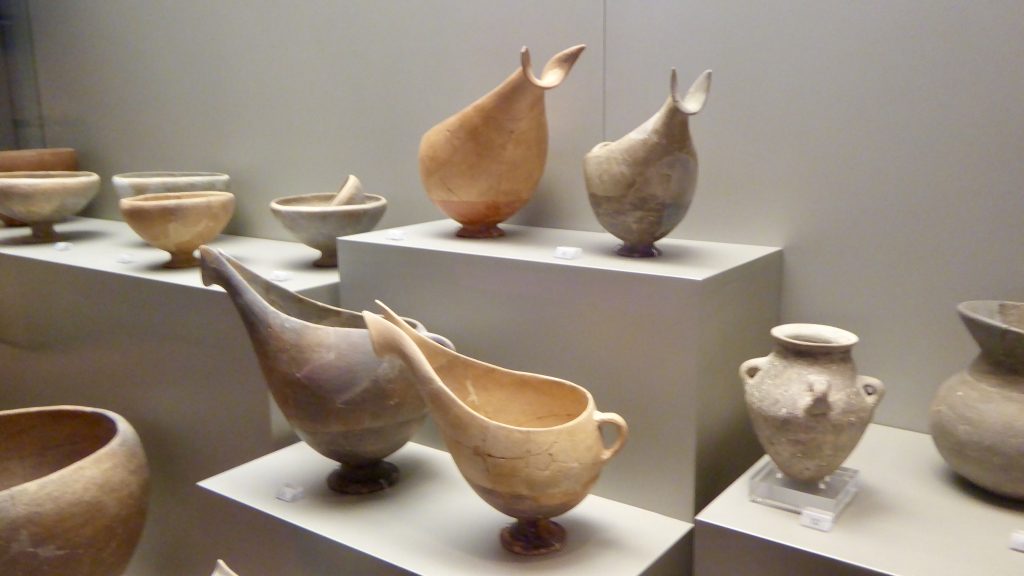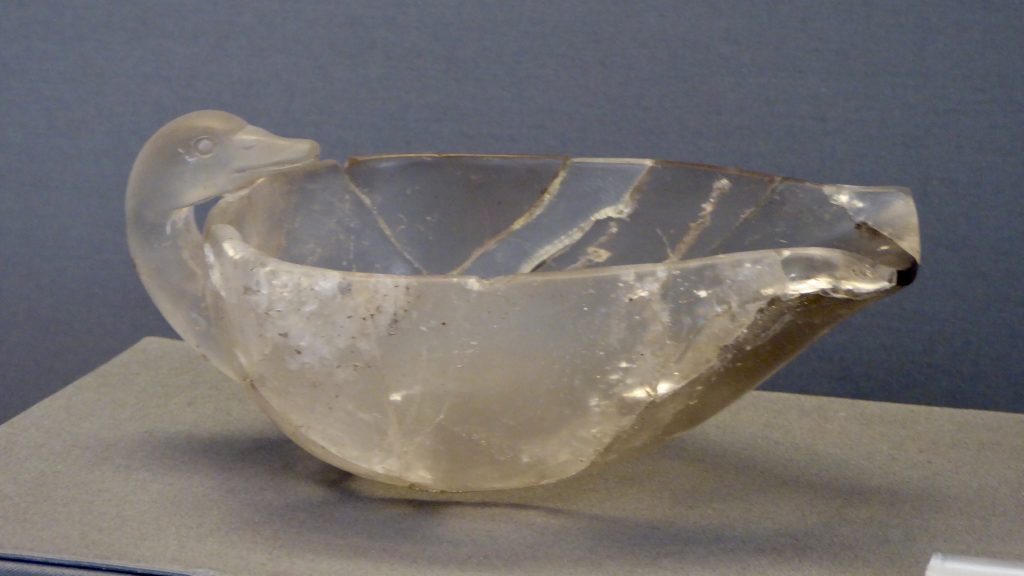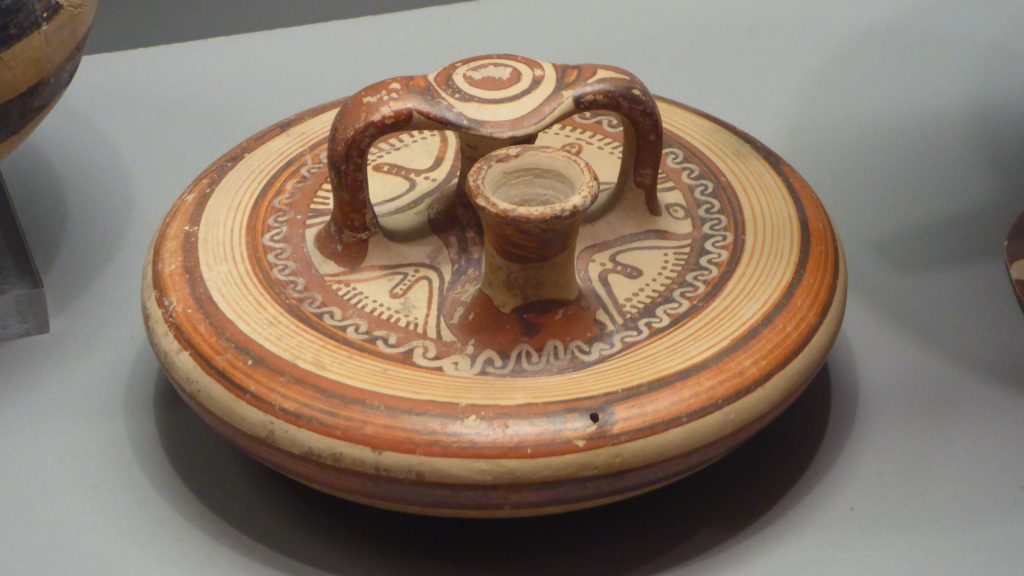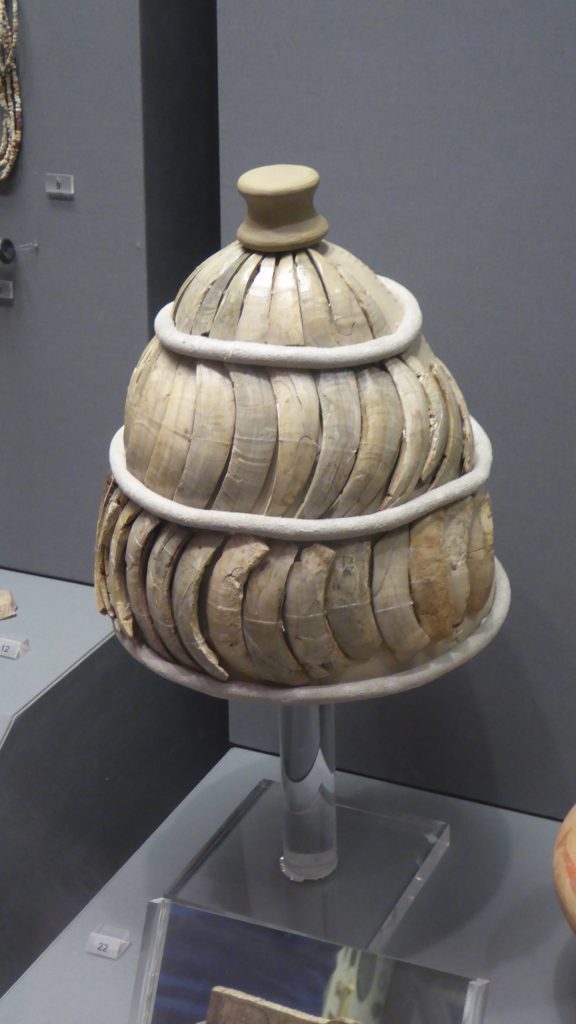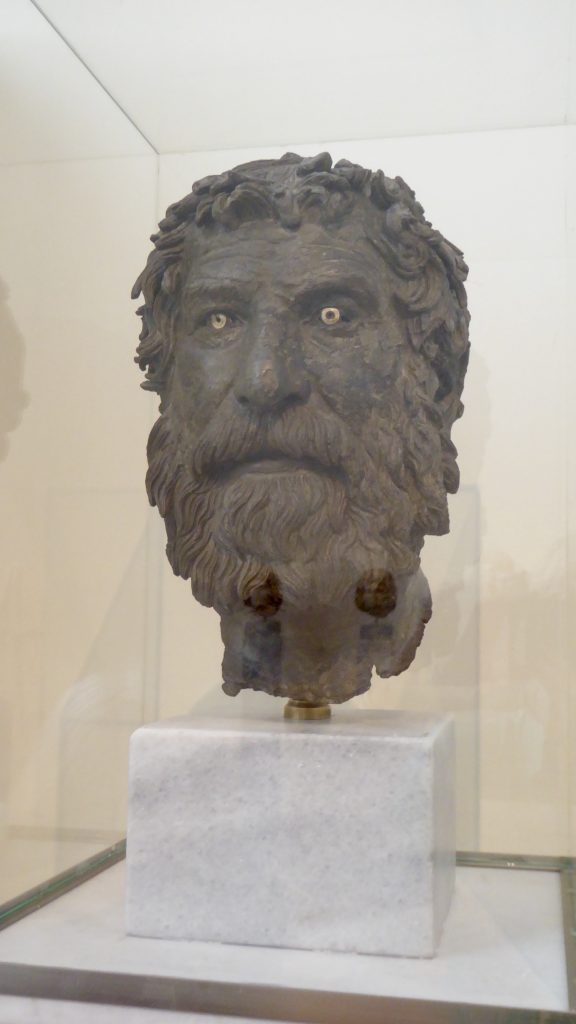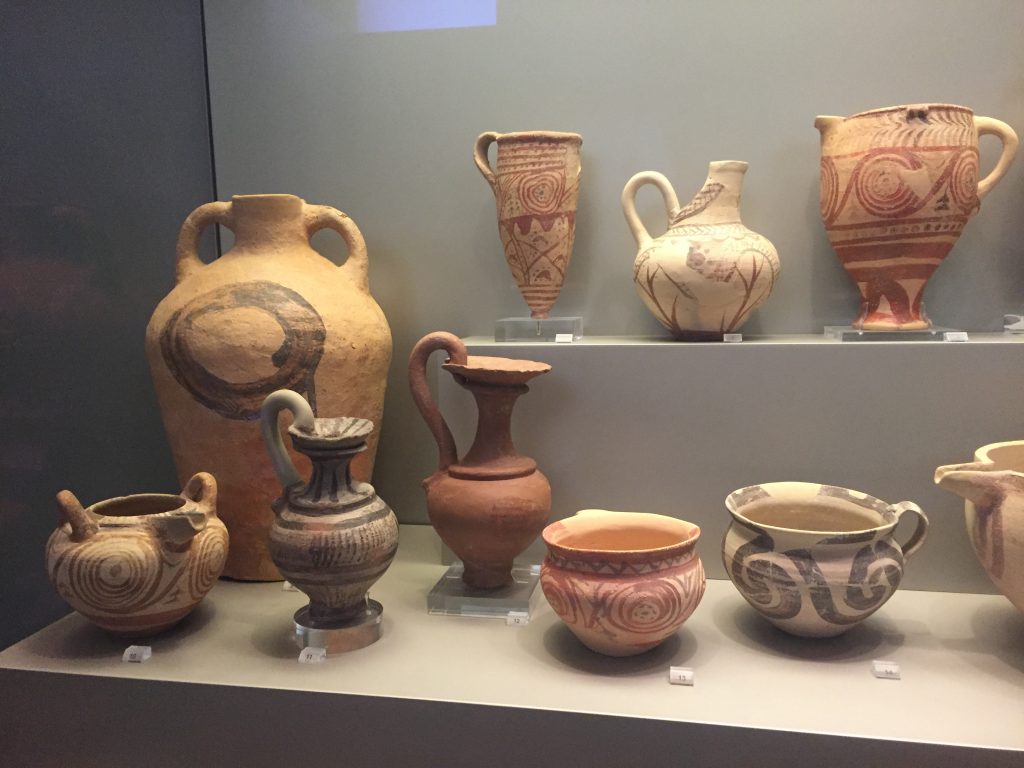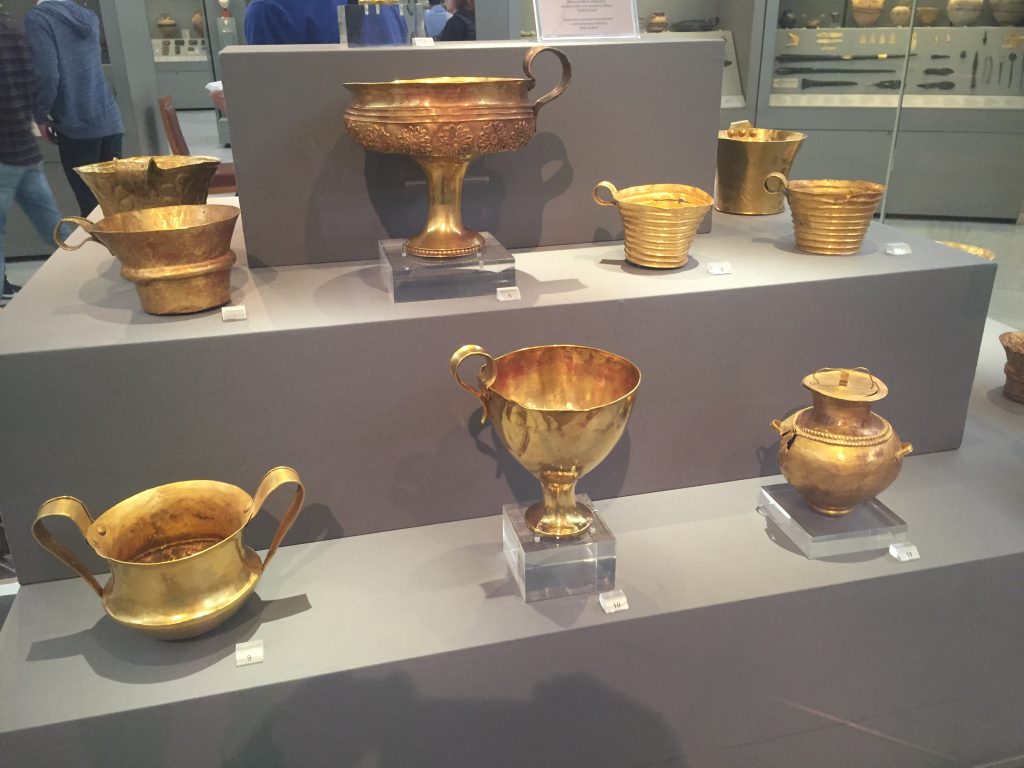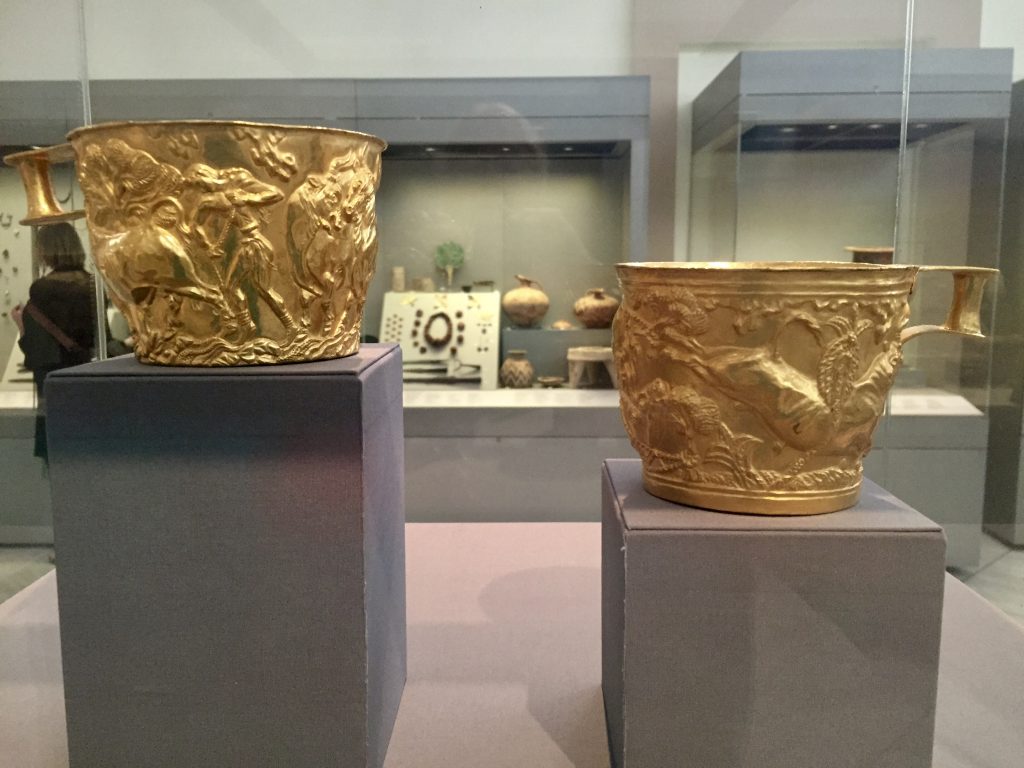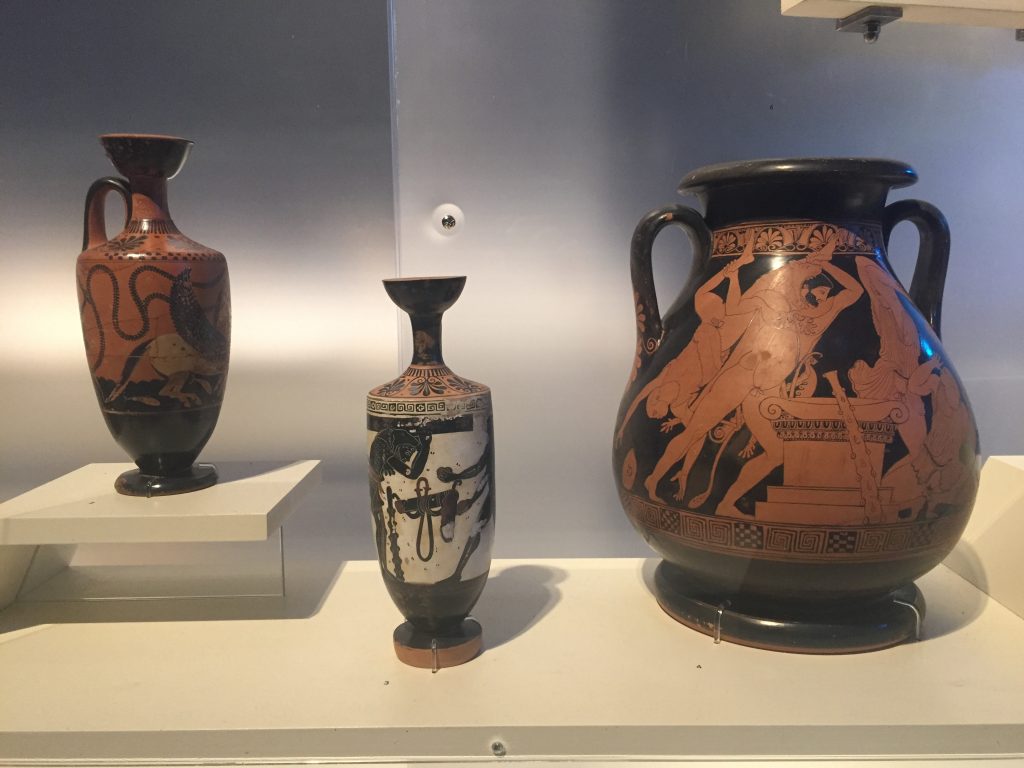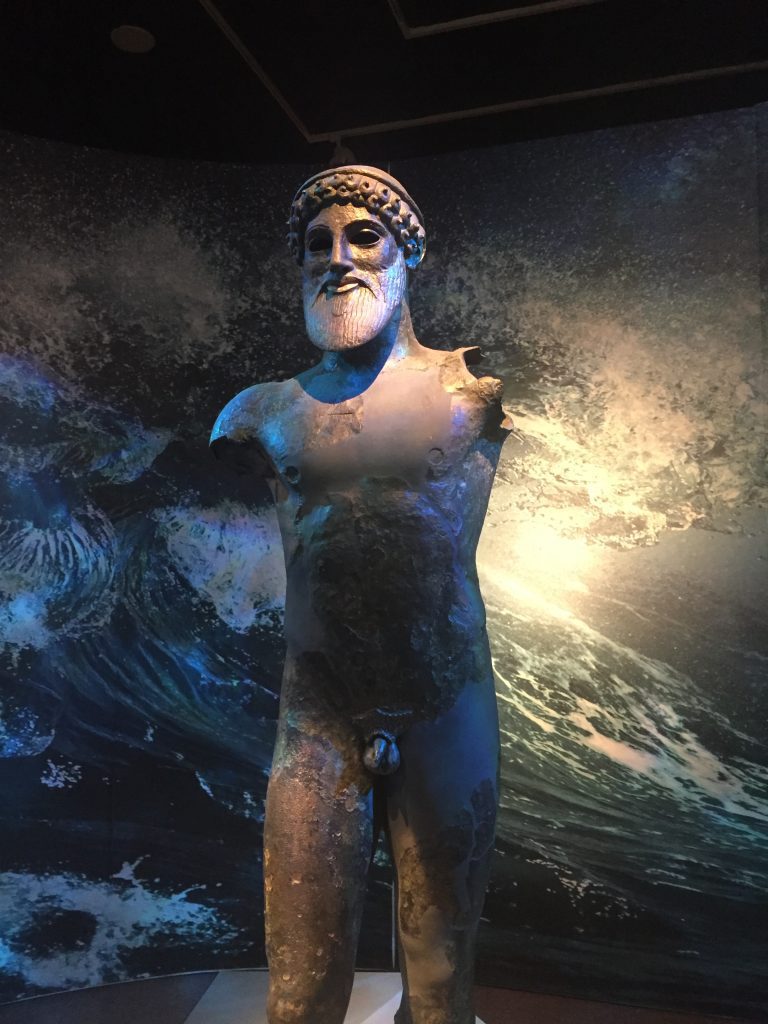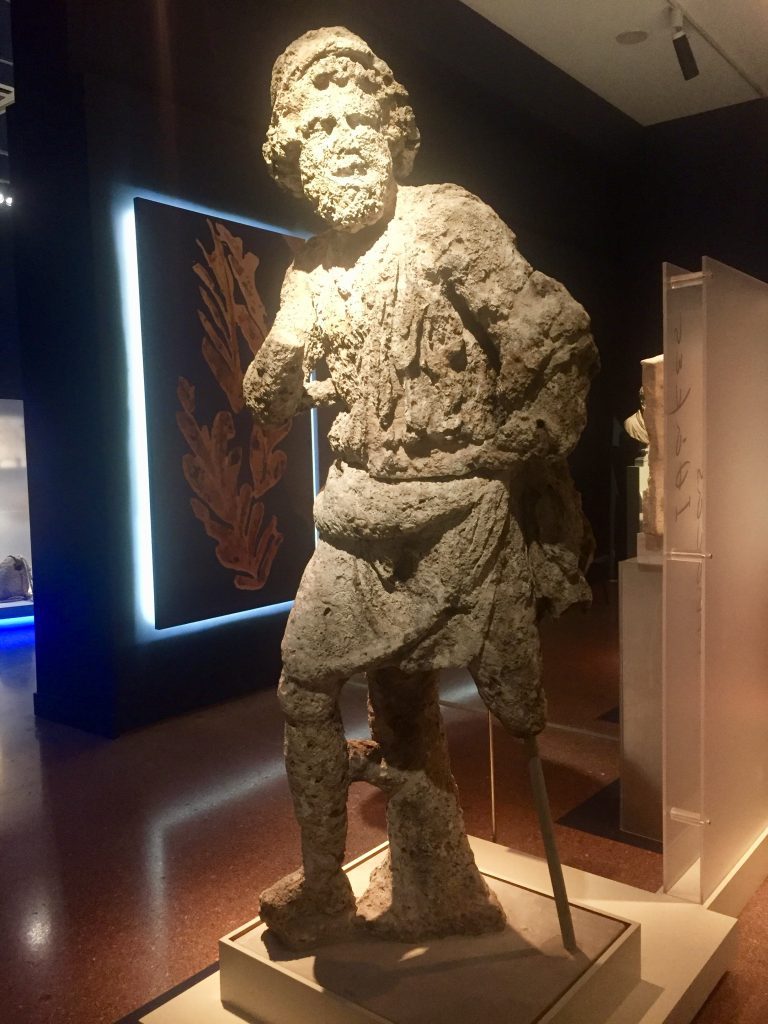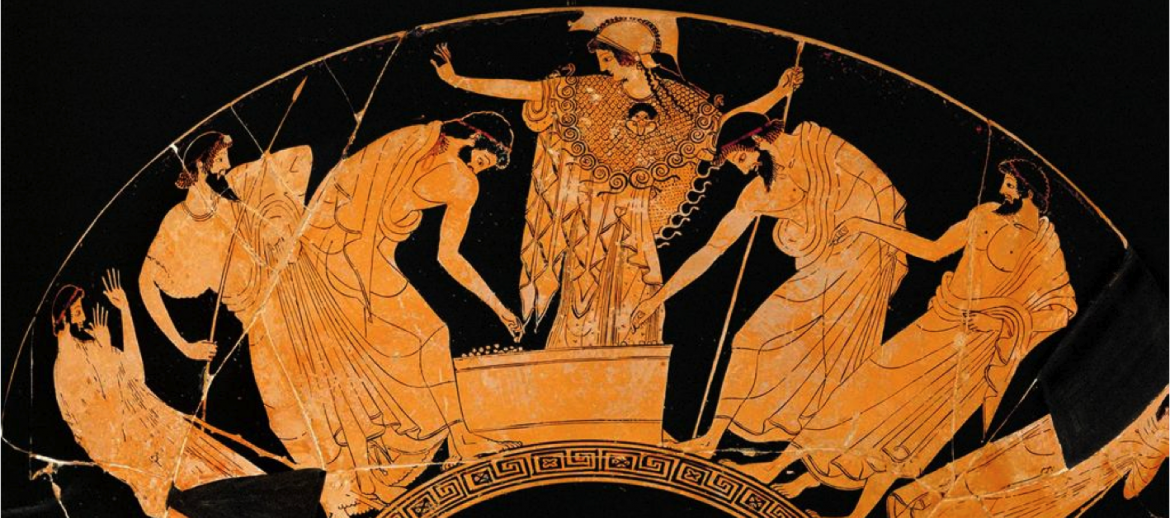Rick Steves says that the Athens Archaeological Museum is one of the best museums in the world, and our experience today could do nothing to refute that. I’d certainly rank it as the best museum I’ve ever visited, both in terms of the simple presentation of the exhibits and for the extraordinary breadth and depth of the cultural expanse which it covers so brilliantly. We spent the better part of a day there. We could spend the better part of a week and not take it all in. My head is still swimming.
The museum covers the Cycladean cultures including Greek, Mycenaean, Cypriot, and Minoan, the Roman period, and also includes a stunning wing of Egyptian artifacts, as Egypt was a major trading partner with Cycladean cultures. Cycladean coverage begins with the Neolithic period, around 5,000 BC, when the Minoan city of Akrotiri was already a thriving trading hub. Pottery from that period clearly influenced later Hellenic civilization from the Mycenaeans onward.
Fortunately, photos without flash are allowed throughout the museum. Unfortunately, that means I took way too many photos to give the remotest impression of what you might find there. If you want to look closer, I have a photo dump of the day’s images which you may peruse here if you’re so inclined. No explanations there, but the images are amazing.
Here are a few of my favorites.
